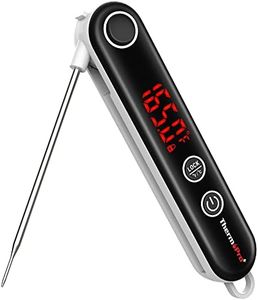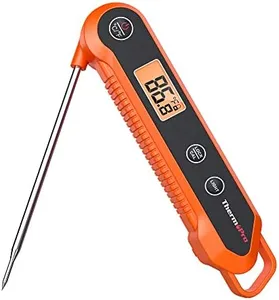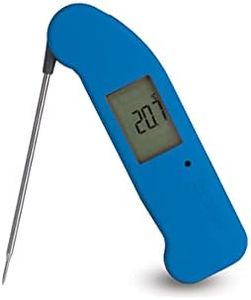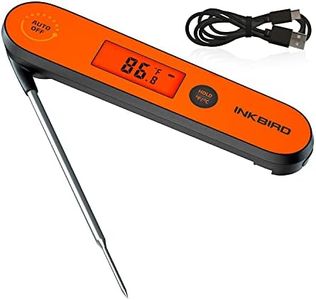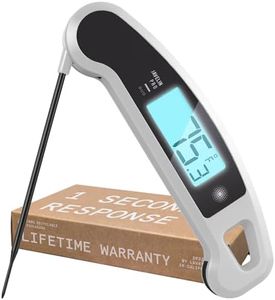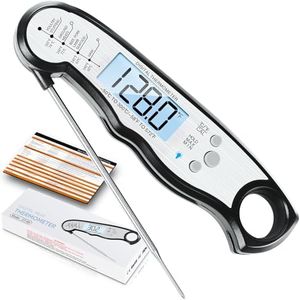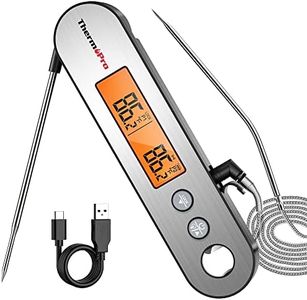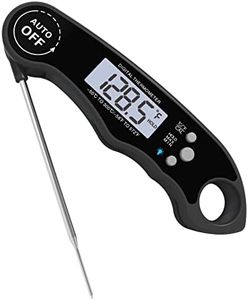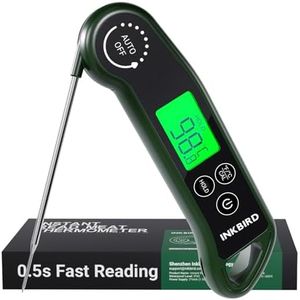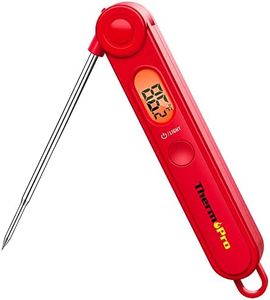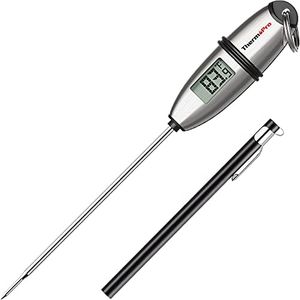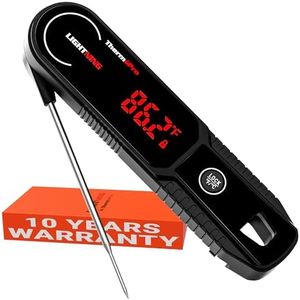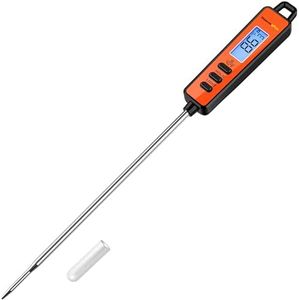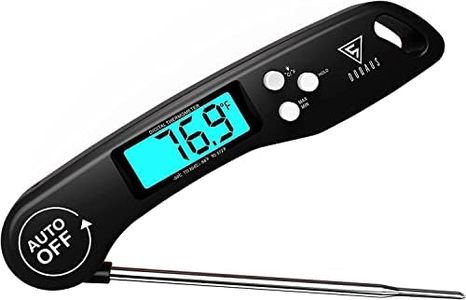We Use CookiesWe use cookies to enhance the security, performance,
functionality and for analytical and promotional activities. By continuing to browse this site you
are agreeing to our privacy policy
10 Best Instant Read Thermometers
From leading brands and best sellers available on the web.Buying Guide for the Best Instant Read Thermometers
Choosing an instant-read thermometer is a smart move for anyone who cooks, grills, or bakes and wants to ensure food safety and perfect results. These handy tools give you quick temperature readings so you can avoid undercooking or overcooking your meals. To choose the best fit, it's important to focus on a few key specifications that affect accuracy, usability, and durability.Response TimeResponse time means how quickly the thermometer provides a temperature reading after being inserted into food. This is important because a quicker response helps you avoid waiting over a hot grill or open oven, reducing the risk of burns and allowing for more accurate monitoring. Generally, response times range from about 2 to 10 seconds. Ultra-fast thermometers in the 2-3 second range are best for those who value speed or cook for crowds, while a 4-6 second response works well for most home cooks. If you don’t mind a brief wait, slightly slower models can still do the job.
AccuracyAccuracy refers to how close the thermometer's reading is to the actual temperature. This spec is crucial if you want reliably safe and delicious food, as even a small error can mean underdone meat or overcooked bread. Accuracy is usually measured in degrees (e.g., +/- 1°F or 0.5°C). For most home cooks, a margin of error of up to 2°F (about 1°C) is acceptable, but if you often prepare delicate dishes or sous-vide, seek models with tighter tolerances, such as +/- 0.5°F.
Temperature RangeTemperature range tells you the lowest and highest temperatures the thermometer can read. This is important if you plan to use your thermometer for a variety of tasks, like candy making, deep frying, or checking frozen items in addition to meats. Ranges commonly start around -50°F (-45°C) up to 500°F (260°C). For most kitchen tasks, a standard range suffices, but if you cook at very high or low extremes, check that your thermometer covers those scenarios.
Probe Length and MaterialProbe length determines how much the thermometer’s sensing needle can reach into food. A longer probe is helpful for big roasts or deep pots, while a shorter one is fine for thin cuts or shallow dishes. Material matters as well—stainless steel probes resist rust and are easy to clean. Think about your typical cooking: go longer for large meats or deep oil, or shorter for everyday grilling and thin cuts.
Readout DisplayThe readout display is the part where you see the temperature. A clear, backlit, and large display makes it easier to read temperatures, especially if you cook outside or in dim kitchens. Some displays are angled or rotatable for convenience. If you wear glasses or often cook in low light, prioritize a bright and easy-to-read display to avoid misreading your results.
Water ResistanceWater resistance means how well the thermometer handles splashes or getting wet. This can matter if you cook outdoors, clean your thermometer under running water, or work in steamy environments. Thermometers with water resistance ratings (marked as IP followed by numbers) can withstand more moisture. If you prefer easy cleanup or often cook outside, choose a water-resistant model; if your use is strictly indoors and neat, this may be less crucial.
